


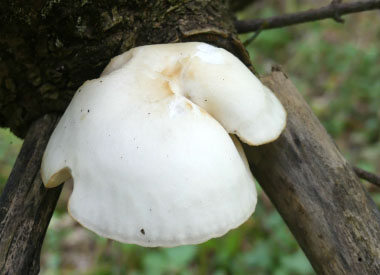
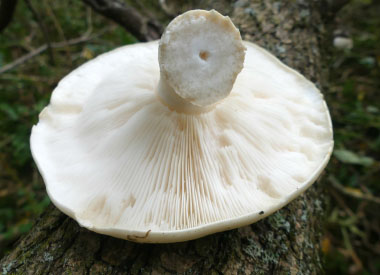
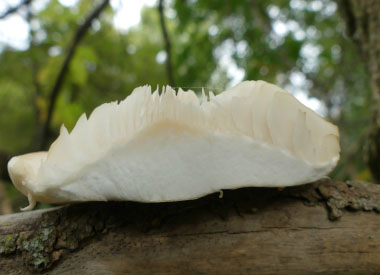

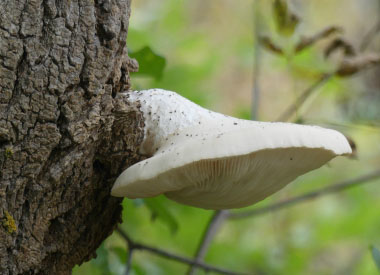

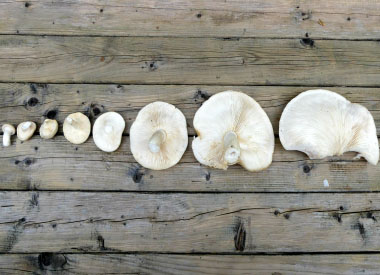
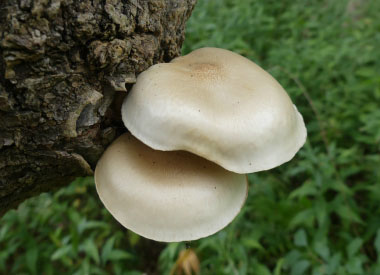
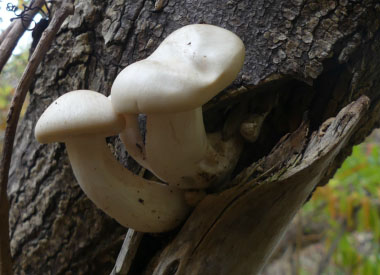
Do not eat any fungi that has not been properly identified by a qualified professional, some are DEADLY when ingested. All edible wild fungi MUST be cooked.
This easy-to-spot mushroom is often mistaken for the common oyster until there is closer examination (common oyster gills are decurrent, elm oysters are not decurrent). It's Latin name Hypsi means "high" or "on high" and zygus means a "yoke" Hypsizygus, then, referring to position of this mushroom often high in the tree. Ulm refers to "elm" indicating one of the common substrates for this fungus.
Type
Distinguishing Features
The colour of the fruiting bodies often depends on its substrate and habitat. Caps can measure anywhere from 5 to 15 cm wide. They are white to buff or tan in colour and sometimes developing a pattern of cracks with age. The stipe is white to off white; dry; smooth; stout; and it develops off-centre to nearly central from the cap. They are often mistaken for being the common oyster.
Height
The stipes reach anywhere from 5 to 10 cm long and can be 1 to 3 cm thick. Although the stipe can be 10 cm long, its actual height may not reflect that depending on how to grows.
Habitat
The elm oyster is distributed all over the temperate climate zones in deciduous and mixed woodland where it grows mainly on boxelder maples or elms. It has been reported that they are found on beech and oak trees as well. Elm oysters are ubiquitous on wounds of living box elders.
Spore Print
White to somewhat buff.
Season
August to December depending on geographical location.
Gills
Attached but not decurrent; whitish, becoming cream with age.
Edibility
The elm oyster mushroom is an excellent edible mushroom which is also grown for commercial purposes. It is an excellent source of protein and vitamins (especially the B-complex). They must be cooked before consuming.
Other Name
Elm Pleurotus.
Recipes
To support our efforts please browse our store (books with medicinal info, etc.).
Winter Survival Food Handbook

PDF Plant Magazines
Types of Wild Food
Geographic Zones Seasons
Disclaimer
EdibleWildFood.com is informational in nature. While we strive to be 100% accurate, it is solely up to the reader to ensure proper plant identification. Some wild plants are poisonous or can have serious adverse health effects.
We are not health professionals, medical doctors, nor are we nutritionists. It is up to the reader to verify nutritional information and health benefits with qualified professionals for all edible plants listed in this web site. Please click here for more information.
Why Edible Wild Food?
- Food costs are rising
- Free, wild food is readily abundant
- Wild food adds nutrition to your diet
- Wild food can help treat various medical conditions







